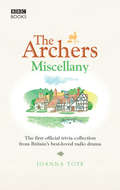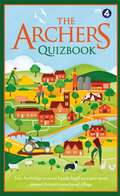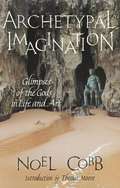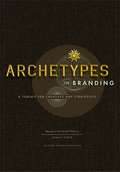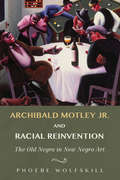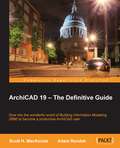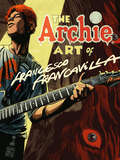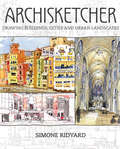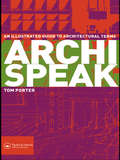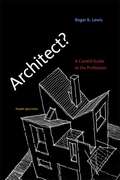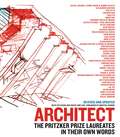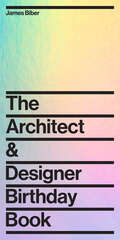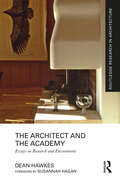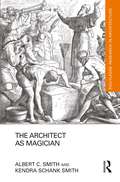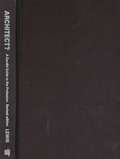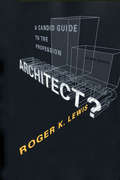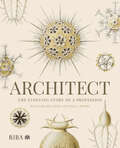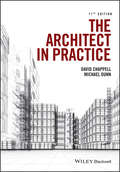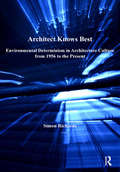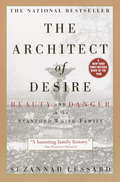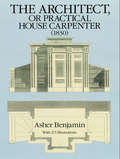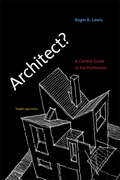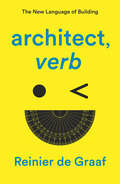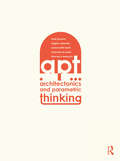- Table View
- List View
The Archers Miscellany
by Joanna ToyeThe first official trivia collection from Britain's best-loved radio drama.Have you ever wondered about the attractions at Ambridge fetes? Puzzled over who the winners were at the Flower and Produce Show? Been curious about details of past Bonfire Nights, or even menus at The Bull? Discover the whos, whats, wheres and whys of the show's past 60 years in The Archers Miscellany.Discover which resident has the most names and meet the animals of Ambridge; learn the order of illumination for the Christmas lights switch-on; ponder Great Ambridge Mysteries and remember Ambridge Wanderers football team fixtures from the glory days of the 1970s.Containing information gathered from the vast BBC Birmingham Archers archives and beautifully illustrated throughout, The Archers Miscellany is the ultimate trivia book for all things Ambridge.
The Archers Quizbook: Join Ambridge treasure Lynda Snell on a quiz quest around Britain's most loved village
by The Puzzle HouseWhich traditionally comes first in the Ambridge year, the Village Fete or the Flower and Produce Show?Which tool appears on the Pargetter coat of arms?Which member of the Archers clan has a first name where all the letters read in alphabetical order?Ambridge is a place many of us know almost as well as our own home towns. But while millions of people are invested in the goings-on in this picturesque village, few have had the privilege of walking its winding lanes. Now you can. Join Lynda Snell, a true pillar of this rural community, as she takes you on a guided tour of radio's most well-loved village.Starting at the summit of Lakey Hill, with its sweeping views of rural Borsetshire, Lynda will lead you around the village's landmarks and institutions imparting wisdom and gossip as she goes. Sun yourself in the beer garden of the Bull, watch the world go by from a bench on the village green and don your wellies for a wander around Brookfield. There are weddings to attend at St Stephen's, productions to enjoy at the Village Hall and deals to be done at the Dower House.Each chapter centres on key locations to challenge your knowledge in all manner of Ambridge affairs. Whether you're a lifelong listener of The Archers, have an ear for gossip, or are a relative newbie, you will be able to put your area of expertise to the test. With 70 years of rich rural history to explore, you might even learn something new.
The Archers Quizbook: Join Ambridge treasure Lynda Snell on a quiz quest around Britain's most loved village
by The Puzzle HouseWhich traditionally comes first in the Ambridge year, the Village Fete or the Flower and Produce Show?Which tool appears on the Pargetter coat of arms?Which member of the Archers clan has a first name where all the letters read in alphabetical order?Ambridge is a place many of us know almost as well as our own home towns. But while millions of people are invested in the goings-on in this picturesque village, few have had the privilege of walking its winding lanes. Now you can. Join Lynda Snell, a true pillar of this rural community, as she takes you on a guided tour of radio's most well-loved village.Starting at the summit of Lakey Hill, with its sweeping views of rural Borsetshire, Lynda will lead you around the village's landmarks and institutions imparting wisdom and gossip as she goes. Sun yourself in the beer garden of the Bull, watch the world go by from a bench on the village green and don your wellies for a wander around Brookfield. There are weddings to attend at St Stephen's, productions to enjoy at the Village Hall and deals to be done at the Dower House.Each chapter centres on key locations to challenge your knowledge in all manner of Ambridge affairs. Whether you're a lifelong listener of The Archers, have an ear for gossip, or are a relative newbie, you will be able to put your area of expertise to the test. With 70 years of rich rural history to explore, you might even learn something new.
Archetypal Imagination: Glimpses of the Gods in Life and Art
by Noel CobbCobb teaches us to look at the world as a record of the soul's struggles to awaken and as the soul's poetry. <P><P>From this perspective, the real basis of the mind is poetic. Beauty, love, and creativity are as much instincts of the soul as sexuality or hunger. <P><P>Cobb shows us how artists and mystics can teach us the meaning of love, death, and beauty, if only we can awaken to their creations.
Archetypes in Branding
by Joshua C. Chen Margaret HartwellCommunication. Authenticity. Creativity. Tomorrow's brands will be defined by their interactions and relationships. Customers are demanding greater accountability from businesses. Workers are craving a deeper sense of meaning from their careers. And companies are continually seeking ways to achieve more powerful and resonant brand engagements. Archetypes in Branding: A Toolkit for Creatives and Strategists offers a practical tool for satisfying these needs. Using a highly participatory approach to brand development, and combined with a companion deck of sixty original archetype cards, this kit gives you the tools you need to: Reveal your brand's motivations, how it moves in the world, what its trigger points are and why it attracts certain customers Forge relationships with the myriad stakeholders that affect your business Empower your team to access their creativity and innovate with integrity C.G. Jung describes archetypes as "pieces of life itself-images that are integrally connected to the individual by the bridge of emotions." Applying archetypes helps bridge the gap between the cognitive and intuitive sides of the brain and between internal and external business objectives. Archetypes in Branding takes you through a fascinating exploration of the important role archetypes have played in mythology and psychology-and now in business-to resolve brand inconsistencies and enhance trust with all stakeholders.
Archibald Motley Jr. and Racial Reinvention: The Old Negro in New Negro Art
by Phoebe WolfskillAn essential African American artist of his era, Archibald Motley Jr. created paintings of black Chicago that aligned him with the revisionist aims of the New Negro Renaissance. Yet Motley's approach to constructing a New Negro--a dignified figure both accomplished and worthy of respect--reflected the challenges faced by African American artists working on the project of racial reinvention and uplift. Phoebe Wolfskill demonstrates how Motley's art embodied the tenuous nature of the Black Renaissance and the wide range of ideas that structured it. Focusing on key works in Motley's oeuvre, Wolfskill reveals the artist's complexity and the variety of influences that informed his work. Motley's paintings suggest that the racist, problematic image of the Old Negro was not a relic of the past but an influence that pervaded the Black Renaissance. Exploring Motley in relation to works by notable black and non-black contemporaries, Wolfskill reinterprets Motley's oeuvre as part of a broad effort to define American cultural identity through race, class, gender, religion, and regional affiliation.
ArchiCAD 19 – The Definitive Guide
by Adam Rendek Scott H. MackenzieThis book is for architects, architectural technicians, and construction professionals who are familiar with 2D CAD programs such as AutoCAD Lite, or have some exposure to a 3D BIM package such as Revit. No experience with ArchiCAD is required. If you want to learn the skills needed for architectural drawing production in the real world, then this book is for you.
The Archie Art of Francesco Francavilla
by Francesco FrancavillaArchie's new hardcover art book is a beautifully-designed celebration of Francesco Francavilla's past decade of artistic dominance, fashioned to appeal to a broad spectrum of readers, including Archie fans, horror aficionados and comic book fans alike.A celebration of Francesco Francavilla's time at Archie, this art book is a gorgeously designed oversize hardcover edition featuring the complete collection of his comic book covers and more. This title goes behind-the-scenes on Francavilla's work and its place in Archie's history, with an insider's look at the creation and ongoing legacy with the company.
Archisketcher: Drawing Buildings, Cities and Landscapes
by Simone Ridyard"For urban sketchers...each new city is a clean white page."There is nothing quite like the thrill of heading out on the town, sketchbook in hand, in search of a view worth capturing. Archisketcher will help you embrace the excitement of sketching on location while overcoming common challenges. You'll see that you don't need to be an architect to draw architecture confidently. Nor do you need to understand the intricate details of perspective, design or color theory. This dynamic handbook tells you just what you need to know to create sketches that work well compositionally, provide a sense of depth and scale, and--most importantly--capture the true spirit of place.Richly illustrated with urban landscapes from around the world--from skyscrapers in Asia, to picturesque English villages, to Mediterranean hill townsTwo-page spreads present various artists' interpretations of Notre Dame, the Brooklyn Bridge and other iconic landmarksFeatures ten spotlights on contemporary urban sketchers who discuss the architectural styles and features in their own neighborhoods, from Montreal to Madrid From architectural portraits to bustling streetscapes to sweeping skylines, the art of urban sketching comes alive on these pages. Whether you aspire to capture the pulse of cities afar or your own hometown, the art and ideas in this book will make your efforts more successful and enjoyable.
Archispeak: An Illustrated Guide to Architectural Terms
by Tom PorterWidely used in architectural circles in the heat of discussion, the recurrent use of particular words and terms has evolved into a language of design jargon. Commonly found in architectural literature and journalism, in critical design debate and especially in student project reviews, Archispeak can seem insular and perplexing to others and -- particularly to the new architectural student -- often incomprehensible.There is a need to translate architectural design concepts into spoken and written commentary -- each word in use embodying a precise and universally accepted architectural meaning. If we explore the vocabulary of this language we gain insight into good design practice and into collective understanding of what constitutes a refined architecture. This unique illustrated guide will help students understand the nuances of this specialized language and help them in communicating their own design ideas.
Architect?
by Roger K. LewisSince 1985, "Architect?" has been an essential text for aspiring architects, offering the best basic guide to the profession available. This third edition has been substantially revised and rewritten, with new material covering the latest developments in architectural and construction technologies, digital methodologies, new areas of focus in teaching and practice, evolving aesthetic philosophies, sustainability and green architecture, and alternatives to traditional practice. "Architect?" tells the inside story of architectural education and practice; it is realistic, unvarnished, and insightful. Chapter 1 asks "Why Be an Architect?" and chapter 2 offers reasons "Why Not to Be an Architect. " After this provocative beginning, Architect? goes on to explain and critique architectural education, covering admission, degree and curriculum types, and workload as well as such post-degree options as internship, teaching, and work in related fields. It offers a detailed discussion of professors and practitioners and the "-isms" and "-ologies" most prevalent in teaching and practicing architecture. It explains how an architect works and gets work, and describes architectural services from initial client contact to construction oversight. The new edition also includes a generous selection of drawings and cartoons from the authors Washington Post column, "Shaping the City," offering teachable moments wittily in graphic form. The author, Roger Lewis, has taught, practiced, and written extensively about architecture for many years. In "Architect?" he explains -- for students, professors, practitioners, and even prospective clients -- how architects think and work and what they care about as they strive to make the built environment more commodious, more beautiful, and more sustainable.
Architect: The Pritzker Prize Laureates in Their Own Words
by Ruth Peltason Grace Ong YanIn this completely revised and up-to-date edition, the world's most accomplished architects-Gehry, Pei, Meier, Nouvel, Piano, and 37 more-express their views on creativity, inspiration, and legacy in this visually stunning, one-of-a-kind collection.The Pritzker Prize is the most prestigious international prize for architecture. Architect includes all 42 recipients of the Pritzker Prize, and captures in pictures and their own words their awe-inspiring achievements. Organized in reverse chronological order by laureate each chapter features four to six of the architect's major works, including museums, libraries, hotels, places of worship, and more. The text, culled from notebooks, interviews, articles, and speeches illuminates the architects' influences and inspirations, personal philosophy, and aspirations for his own work and the future of architecture. The book includes More than 1000 stunning photographs, blueprints, sketches, and CAD drawings.Architect offers an unprecedented view into the minds of some of the most creative thinkers, dreamers, and builders of the last three decades and reveals that buildings are political, emotional, and spiritual.
The Architect and Designer Birthday Book
by James BiberA thoughtfully curated collection in a stunning package that recognizes and celebrates the birthdays of famous, infamous, and often-overlooked designers and architects.The gift book for design and architect professionals and students they didn’t know they needed but will no longer be able to live without. Drawn from architect James Biber's epic Instagram project in which he posted a birthday bio of a famous (or less famous) designer or architect every day for a (mid-pandemic) year, The Architect and Designer Birthday Book is filled with personal, opinionated, and humorous observations on fascinating design and architect figures past and present.The minibiographies and birthday profiles in the book cover a range of international architects and designers, as well as artists, including:Architects from the Aaltos (Aino and Alvar) to ZumthorRivals Bernini and BorrominiPhotographers Lee Miller, Louise Dahl-Wolfe, Vivian Maier, Dody Weston Thompson, Margaret Morton, and Judith TurnerMidcentury modernists Marcel Breuer, Walter Gropius, and Florence KnollCharlotte Perriand, Lilly Reich, Anne Tyng, and Denise Scott BrownMore anecdotal histories than authorized biographies, these daily profiles are not only fun to read but provide spot-on commentary for anyone interested in how designers and architects relate to each other as well as their place in history. It is the intersection of Biber’s life and the history of architecture and design.
The Architect and the Academy: Essays on Research and Environment (Routledge Research in Architecture)
by Dean HawkesThis book presents an expansive overview of the development of architectural and environmental research, with authoritative essays spanning Dean Hawkes’ impressive 50-year academic career. The book considers the relationship between the technologies of the environment and wider historical and theoretical factors, with chapters on topics ranging from the origins of modern ‘building science’ in Renaissance England to technology and imagination in architecture. It includes numerous architectural examples from renowned architects such as Christopher Wren, Peter Zumthor, Alvar Aalto, Robert Venturi and Carlo Scarpa. Aimed at students, scholars, and researchers in architecture and beyond, this illustrated volume collates important and wide-ranging essays tracing the definition, scope and methodologies of architectural and environmental studies, with a foreword by Susannah Hagan.
The Architect as Magician (Routledge Research in Architecture)
by Albert C. Smith Kendra Schank SmithThe Architect as Magician explores the connection between magic and architecture. There is a belief that a greater understanding of the meaning of magic provides insights about architecture and architects’ design processes. Architects influence the effects of nature through the making of their buildings. In an analogous condition, magicians perform rituals in an attempt to influence the forces of nature. This book argues that architects could gain much by incorporating ideas from magic into their design process. The book demonstrates through historical and current examples the important influence magic has had on the practice of architecture. The authors explain how magic helps us to understand the way we infuse architecture with meaning and how magic affects and inspires architectural creation. Aimed at architects, students, scholars and researchers, The Architect as Magician helps readers discover the ambiguous and spiritual elements in their design process.
Architect? A Candid Guide to the Profession
by Roger K. LewisThis revised edition includes new information pertinent to current education and practice and addresses issues and concerns of great interest to students choosing among different types of programs, schools, firms, and architectural career paths.
Architect? A Candid Guide to the Profession, revised and expanded edition: A Candid Guide To The Profession (The\mit Press Ser.)
by Roger K. LewisThis revised edition of the best basic guide to the architectural profession includes new information pertinent to current education and practice and addresses issues and concerns of great interest to students choosing among different types of programs, schools, firms, and architectural career paths.The first edition of Architect?, published in 1985, quickly became known as the best basic guide to the architectural profession. More than a decade later, it is a standard text for introductory courses on architecture and recommended reading on the application forms of many schools of architecture. This revised edition includes new information pertinent to current education and practice and addresses issues and concerns of great interest to students choosing among different types of programs, schools, firms, and architectural career paths.Roger K. Lewis, a practicing architect and educator, takes a hard look at the education of the architect as he covers such topics as curriculum content, pedagogical theories and methods, program and faculty types, the admission process, internship, compensation, computer-aided design, and the culture of small and large firms. He tells how an architect works and gets work, and explains all aspects of architectural services, from initial client contact to construction oversight.The author describes the benefits of becoming an architect, including the opportunity to express oneself creatively, to improve the environment, and to achieve notoriety. But he doesn't hesitate to show the other side—the lack of steady work and appropriate compensation, the intensity of competition, the restrictions imposed by clients, and the high degree of anxiety and disillusionment among young architects. Written in a clear, accessible style, the book is accompanied by the authors often-humorous illustrations and a valuable appendix.
Architect: The evolving story of a profession
by Eleanor Jolliffe Paul CrosbyThe architect’s role is constantly adapting. Throughout history it has shifted significantly, shaped by social, cultural, technological and economic forces. The very definition of what an architect is and does has evolved over time from lead builder or master mason to principal designer. A collaborative and reactive profession, it is inextricably linked to the power of the patron, whether the client is an influential and affluent individual or a political, commercial, civic or religious organisation. From Ancient Egypt, where architects were members of the ruling class, tied into the running of the empire, to the 21st century when questions are being raised about the future of the profession, this book, with its engaging narrative, explores the constant threads that remain as the profession adapts. While architects are no longer deified, their ability to imagine a new impending reality in built form implies a visionary dimension to their work. By focusing on both the practicalities of the profession and the more intangible motivations behind design – humans’ need to make a mark upon their surroundings – this volume provides a critical overview of over 3000 years of practice and education. Looking at the key questions of where the architectural profession originated in the Western tradition, why it is, how it is today and where it might be going next, the authors postulate that architects’ ability to adapt and reinvent themselves in the past will stand them in good stead for the uncertainties of the future.
The Architect in Practice
by David Chappell Michael DunnThroughout its many editions, The Architect in Practice has remained a leading textbook used in the education of architects. While the content of the book has developed, the message and philosophy has remained constant: to provide students of architecture and the young practitioners with a readable guide to the profession, outlining an architect's duties to their client and contractor, the key aspects of running a building contract, and the essentials of management, finance and drawing office procedure. The eleventh edition follows in that tradition. The text has been brought up to date to ensure it follows the new RIBA Plan of Work 2013 as the guide to the architect's workflow. In addition, a number of changes to standard forms of contract were made with the publication of the JCT 2011 suite of contracts, and the RIBA Standard Form for the Appointment of an Architect 2010 (2012 Revision). These new forms are fully covered. In addition, the opportunity has been taken to reorganise the layout so that the content flows in a way that is more consistent with current architectural practice, and to deal with the increasing use of BIM. The eleventh edition of The Architect in Practice continues to provide the guidance and advice all students and practising architects need in the course of their studies and in their profession.
Architect Knows Best: Environmental Determinism in Architecture Culture from 1956 to the Present (Ashgate Studies In Architecture Ser.)
by Simon RichardsThe idea that buildings could be used to reform human behaviour and improve society was fundamental to the 'modernist' architecture and planning of people like Walter Gropius, Le Corbusier and José Luis Sert in the first half of the 20th century. Their proposals for functional zoning, multi-level transport, high-rise living, and machine-inspired aesthetics came under attack from the 1950s onwards, and many alternative approaches to architecture and planning emerged. It was thought that the environmental determinist strand of the discourse was killed off at this time as well. This book argues that it was not, but on the contrary, that it has deepened and diversified. Many of the most prominent architect-planners continue to design with a view to improving the behaviour of individual people and of society at large. By looking at - and interviewing - major figures and movements of recent years in Britain, Europe and America, including Léon Krier, Peter Eisenman, Andrés Duany, Jane Jacobs, Robert Venturi and Denise Scott Brown, it demonstrates the myriad ways that architect-planners seek to shape human behaviour through buildings. In doing so, the book raises awareness of this strand within the discourse and examines its different purposes and manifestations. It questions whether it is an ineradicable and beneficial part of architecture and planning, or a regrettable throwback to a more authoritarian phase, discusses why is it seldom acknowledged directly and whether it could be handled more responsibly and with greater understanding. Richards does not provide any simple solutions but in conclusion, is critical of architect-planners who abuse the rhetoric of social reform simply to leverage their attempts to secure building commissions, while being more sympathetic towards those who appear to have a sincere desire to improve society through their buildings.
The Architect of Desire
by Suzannah LessardThe story of Stanford White--his scandalous affair with the 16-year-old actress Evelyn Nesbit, his murder in 1906 by her husband, the millionaire Harry K. Thaw, and the hailstorm of publicity that surrounded "the trial of the century"--has proven irresistable to generations of novelists, historians, and biographers. The premier neoclassical architect of his day, White's legacy to the world were such masterpieces as New York's original Madison Square Garden, the Washington Square Arch, and the Players, Metropolitan, and Colony clubs. He was also responsible for the palaces of such clients as the Whitneys, Vanderbilts, and Pulitzers, the robber barons of the Gilded Age whose power and dominance shaped the nation in its heady ascent at the turn of the century.As the century rolled on, however, the story of Stanford White and Evelyn Nesbit came to be viewed as glamorous and romantic, the darker narrative of White's out-of-control sexual compulsion obscured by time. Indeed, White's wife Bessie and his son Larry remained adamantly silent about the matter for the duration of their lives, a silence that reverberated through the next four generations of their extended family.Suzannah Lessard is the eldest of Stanford White's great grandchildren. It was only in her 30's that she began to sense the parallels between the silence about her great-grandfather's life and the silence about her own perilous experience as a little girl in her own home. Thus she became drawn to the remarkable history of her family in order to uncover its hidden truths, and in so doing to liberate herself from its enclosure at last. The result is a multi-layered memoir of astonishing elegance and power, one that, like a great building, is illumined room by room, chapter by chapter, until the whole is clearly seen.
The Architect, or Practical House Carpenter (Dover Architecture #1830)
by Asher BenjaminThe superbly illustrated and detailed handbook that popularized the use of classic Greek architectural style in America in the early and middle 1800s. 271 illustrations.
Architect?, third edition: A Candid Guide to the Profession (The\mit Press Ser.)
by Roger K. LewisThe new edition of an essential text offers an informative, engaging view of the architectural profession from education through practice.Since 1985, Architect? has been an essential text for aspiring architects, offering the best basic guide to the profession available. This third edition has been substantially revised and rewritten, with new material covering the latest developments in architectural and construction technologies, digital methodologies, new areas of focus in teaching and practice, evolving aesthetic philosophies, sustainability and green architecture, and alternatives to traditional practice. Architect? tells the inside story of architectural education and practice; it is realistic, unvarnished, and insightful. Chapter 1 asks “Why Be an Architect?” and chapter 2 offers reasons “Why Not to Be an Architect.” After this provocative beginning, Architect? goes on to explain and critique architectural education, covering admission, degree and curriculum types, and workload as well as such post-degree options as internship, teaching, and work in related fields. It offers a detailed discussion of professors and practitioners and the “-isms” and “-ologies” most prevalent in teaching and practicing architecture. It explains how an architect works and gets work, and describes architectural services from initial client contact to construction oversight. The new edition also includes a generous selection of drawings and cartoons from the author's Washington Post column, “Shaping the City,” offering teachable moments wittily in graphic form.The author, Roger Lewis, has taught, practiced, and written extensively about architecture for many years. In Architect? he explains—for students, professors, practitioners, and even prospective clients—how architects think and work and what they care about as they strive to make the built environment more commodious, more beautiful, and more sustainable.
architect, verb.: The New Language of Building
by Reinier de GraafThe Hidden Rules of Architecture: how to build world-class, award winning, creative, innovative, sustainable, liveable and beautiful spaces that foster a sense of place and well beingLeading architect Reinier de Graaf De Graaf punctures the myths behind the debates on what contemporary architecture is, with wit and devastating honesty. Architecture, it seems, has become too important to leave to architects. No longer does it suffice to judge a building solely by its appearance, it must be measured, and certified. When architects talk about &“Excellence,&” &“Sustainability,&” &“Well-being,&” &“Liveability,&” &“Placemaking,&” &“Creativity,&” &“Beauty&” and &“Innovation&” what do they actually mean? In architect, verb. De Graff dryly skewers the doublespeak and hot air of an industry in search of an identity in the 21st century. Who determines how to measure a &“green building&”? Why is Vancouver more &“liveable&” than Vienna? How do developers get away with advertising their buildings as promoting &“well-being&”? Why did Silicon Valley become so obsessed with devising &“creative&” spaces or developing code that replaces architects? How much revenue can be attributed to the design of public space? Who gets to decide what these measurements should be, and what do they actually mean? And what does it mean for the future of our homes, cities, planet? He also includes a biting, satirical dictionary of &“profspeak&”: the corporate language of consultants, developers and planners from &“Active listening&” to &“Zoom Readiness.&”
Architectonics and Parametric Thinking: Computational Modeling for Beginning Design
by Frank Jacobus Angie Carpenter Rachel Smith Loerts Antonello Di Nunzio Francesco BedeschiThis book is an approachable guide for students and professionals to learn parametric modeling through the lens of architectonics, allowing readers to pair fundamental ideas about architecture with parametric thinking. Architectonics and Parametric Thinking begins by clearly positioning the potentials of parametric design through a series of chapters written by leaders in their respective industries. This helps to situate the vast potential of parametric softwares, allowing the reader to understand the full range of what is made possible by working computationally. Following this theoretical introduction, the book presents a manual that walks readers through the step-by-step construction of parametric modeling scripts built through an architectonic lens using clear, compelling diagrams. Each of these diagrams provide textual accompaniment that describes how each new portion of the script is transforming the algorithm as a whole, as well as diagrams that show the physical transformation that is taking place as a result of the script’s evolution. Parametric modeling is radically transforming the design disciplines and will become the primary way designer’s generate new products moving forward. Written and expertly designed for architecture students and professionals, this book provides an interactive approach to teaching the basics of parametric thinking in relation to architecture and design.
